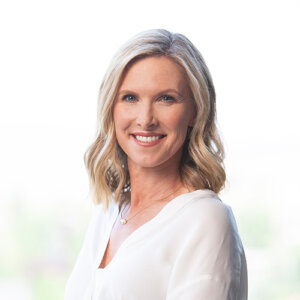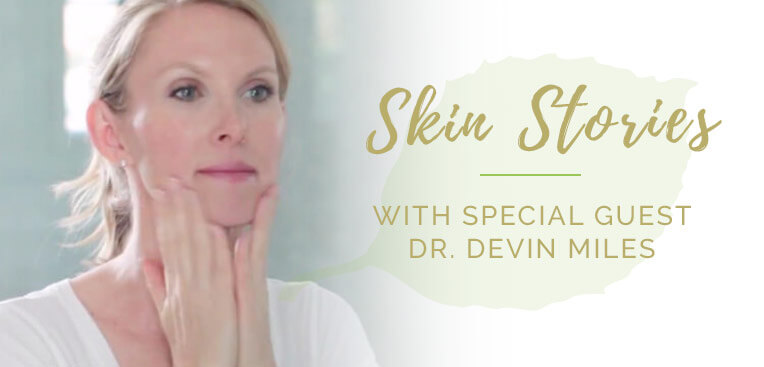Yoga helps us with flexibility, mobility, strength and even mindfulness. Sometimes it can be daunting to figure out how to incorporate yoga into your fitness routine. But, you don’t have to set aside time for a 90 minute class. You can do that if you wish, but there is a simple way too. And, that’s why I’m having my guest on today…
Dean Pohlman is the founder and CEO of Man Flow Yoga. Dean is also the author of the #1 bestselling Yoga Basics for Men (in 4 categories on Amazon) eBook, the creator of the top 4 bestselling Yoga Boost DVD in the Fitness & Exercise category on Amazon, and yoga trainer to professional athletes. Dean considers it his mission to show men (and others who wouldn’t typically try yoga) how yoga can improve their fitness by utilizing a down-to-earth, no-frills, fitness-centric approach to teaching yoga. In today’s interview, we talk about how to incorporate yoga into your exercise routine whether you’re brand new to yoga or you’re an athlete (and everything in between).
So please enjoy this interview…
Check out Dean Pohlman online here.
The best way to get started with Man Flow Yoga is to take the FREE 7-Day Intro to Man Flow Yoga.
TRANSCRIPTION:
Trevor: Hi there. I’m Doctor Trevor Cates. Welcome to the Spa Dr. Podcast. Yoga helps us with flexibility, mobility, strength, and even mindfulness. Sometimes, though, it can be daunting to figure out how to incorporate yoga into your fitness routine, but you don’t have to set aside a night time for a 90-minute class. There are other options. You can do the 90-minute class if you want, but there is a simple way to do it, too. So, that’s why I wanted to have this guest on today to talk about how we can, regardless of our level of fitness or our current practices, how can we start incorporating yoga into our regular routine because of all of its benefits.
So, my guest is Dean Pohlman. He’s the founder of Man Flow Yoga. He is the author of the #1 best-selling Yoga Basics for Men, in four different categories on Amazon it’s a bestseller. He’s also the creator of the top four best-selling Yoga Boost DVD’s in the Fitness and Exercise category on Amazon, and he’s a yoga trainer to professional athletes. Dean considers it his mission to show men and others who typically wouldn’t try yoga, how yoga can improve their fitness by utilizing a down-to-earth, no frills fitness-centric approach to teaching yoga.
In today’s interview, we talk about how to incorporate yoga into your exercise routine, whether you’re brand new to yoga and you’re just getting into shape or you’re an athlete and everything in between that. So, please enjoy this interview with Dean.
Dean, it’s great to have you on our podcast.
Dean: Hey, Trevor. Thanks for having me.
Trevor: Yeah. So, we’re talking about yoga today, and I’m a big fan of yoga. I don’t do it as much as I should, so by the end of this podcast, I’m probably gonna be signing up for more yoga classes. I have a feeling, right, because you’re gonna be telling us about what we’re missing out on when we don’t do yoga because a lot of people, a lot of people that are my audience get out, they do different types of fitness, but yoga isn’t always at the top of people’s list. So, why do you think that is?
Dean: I think that one big reason why is just because as a society when we look at workouts, or kind of the default way of looking at workouts is, “How many calories am I going to burn from my workouts?” And we don’t look at a lot of other statistics, or we don’t look at a lot of other parts of the workout. We think, “Well, if this workout burns the most possible calories,” like, so if a spin class does 900 calories or 1200 calories in an hour, then I’m gonna go do a spin class because I can burn the most calories in that time. What we don’t look at is, well, what are the other fitness benefits that go in with this? What about the muscle-building aspects? What about the benefits of mobility? What about the balancing aspects? Or how does this effect stress levels, and how does this reduce stress? Does this make me sleep better?
You know, so we don’t look at fitness, we don’t look at the workout in terms of, “What are all the things that I get out of it? Or what are all the different strengths that I build?” Instead, we tend to look at it as in something, you know, kind of like, Dave likes to talk, you know, Dave [inaudible 00:03:12] likes to talk about his calories in, calories out and that thing, right? So, we look at it kind of like a bank account, like, “Okay. Well, I’ve eaten 1200 calories a day, so let me do a workout that burns 1200 calories, so then I’ll be right in the middle and I’ll be balanced again.” So, I think that’s the main reason.
Trevor: Right and, but yoga’s one of those things that whatever your current practices are with fitness, whether you’re an endurance athlete, cross-fitter or functional fitness, or maybe you’re just getting into working out more regularly it seems that there are benefits for yoga, right? So, how do people fit this in with what they’re already doing?
Dean: Yeah. So, I think that the biggest benefits that yoga can provide are filling the gaps of what your other training does not, so if you are doing crossfit or functional fitness or something that’s really intense and uses a lot of weight, for you it would make sense to focus on the recovery aspects of yoga. It would make sense to focus on building strengths and end range of motion or building isometric strength, right, because in all those really quick things, you’re doing, you’re not holding the weight at all, right? You’re doing, like, up-down as fast as you can. So, the best way to fit yoga is by doing the opposite of what you’re not doing in your existing program.
So, for runners, that would mean, you know, building strength and twisting movements because if you’re running, you’re just straight forward, we also tend to have pain in the knees because we’re not working on our hips enough, we’re not working on spinal mobility, so for runners it would be adding in that different spine mobility aspect and also strengthening the hips, so those are just a couple examples, but really the best way you can get stronger with yoga is by using it as a, in my opinion, as using it as a, or I guess in the situations, is using it as a compliment to directly compliment your existing fitness routine.
Trevor: Yeah, and so if someone is working out most days of the week, doing these kinds of trainings, where are they going to fit yoga in? I mean, are they going to get the benefit from doing, you know, just certain yoga exercises once a week or what’s the best way to practically use yoga, to fit it in?
Dean: Yes, so, I like to say 100 minutes per week and you can break that up however you want so you can do three 30-minute sessions per week, you can do five 20-minute sessions per week, you can do 10 minutes everyday with maybe a 10 minute evening session and a 10 minute morning session on some days. So, but, as far as how to structure it into your workouts, yoga should be, it can be part, there’s a lot [inaudible 00:06:08].
So, the first way you can use yoga is as a warmup. So, you can use it to get your body ready for exercise, to work on muscle activation, to work on getting your hips and your core and your back active, working a little bit into mobility. You can use it as a cool-down, right, so you can use your storage structures after your workout to start your recovery, to jumpstart your recovery to release tension, to sleep better and ultimately to grow stronger and more quickly and you can also use it as a stand-alone workout, where you’re doing demanding yoga postures that challenge your strength and balancing postures or end range of motion or working [inaudible 00:06:47] while also holding up your body weight.
So, there’s a lot of different ways that you can use it. Personally, I recommend using yoga as a warm-up and as a cool-down, so it doesn’t have to be that long it could be just a few minutes on either end of your workout. And I recommend doing yoga as a stand-alone workout at least once or twice per week. So, at least have 20-30 minutes per week where your 20-30 minute session, once per week, where you’re devoting time to improving your technique in the postures and really focusing on building strengths and doing the best you possibly can in the postures whereas, you know, in the cool-down and restorative, those are more so to compliment your workout whereas the other workouts are more as a stand-alone intense form of workout using yoga.
Does that, is that clear or did I explain that well enough or … ?
Trevor: Yeah, yeah, that makes sense, so what do you do? What’s your, I mean, obviously, I mean for people that are watching or that have seen your picture, you are a very fit guy. So, I mean, you don’t look like the typical yogi. I’m just gonna, you know, say that and I guess the typical yogi in our mind is just very lean and thin and not a ton of muscle tone, so, and I’m being totally generalized here, I’m sure there are plenty of yogi’s out there that are fit and muscular …
Dean: No, you’re totally, you’re totally right [crosstalk 00:08:20].
Trevor: So what are you doing that might be, you know, some people can get an idea?
Dean: Sure, so 75% of what I do is yoga. And by that, I mean, 75% of the time I spend exercising is doing yoga or some type of body-weight infused yoga exercise. In addition to yoga, currently, I started swimming a few months ago, so I’m doing swimming like 2-3 times a week, but just for 20-30 minutes at a time so that’s not that much. I do a lot of pull-ups, so I’ll probably do 2 to mostly 2 sometimes 3 pull-up workouts per week where I just go and find a pull-up bar and do 30-50 pull-ups and then I also try to do weightlifting.
I schedule weightlifting twice per week, I usually end up doing it once per week, but I’m not doing like a full 60 minute session at the gym, I’m really just doing one movement and focusing on it. So, I’m doing dead lifts one day or I’m doing squats one day, maybe I’ll throw in some sort of rowing motions, like an upright or bent over row, but for the most part it’s those, it’s the pull-ups, the deadlift and the pull-ups, the deadlift and the squats in addition to yoga.
And I think the way that, you know, cause you commented before, I do look different than yogis and the reason for that is because I focus on different things when I’m doing yoga. I really focus on the muscle activation aspects of yoga because I think that when you slow things down and really focus on your body, that’s something that you don’t do in a lot of other types of fitness, so if you can do that in yoga and really focus and really improve the muscle activation, that’s going to translate into your other workouts and make them way more efficient, so I can go to the gym and do a 20 minute workout and be totally exhausted and actually get stronger from it and see gains from it because I’m being so efficient and that’s thanks to the emphasis that I place on checking in with my body and building that muscle activation through yoga.
Trevor: And I see yoga as something that helps us with aging, with healthy aging, I should say and that when if we’re just doing, like you’re talking about, if you’re just a runner and you’re running all the time and you’re not mixing things up and you’re not working on your flexibility, your core strength, your, you talked about twisting motions, those sorts of things, as we get older we’re going to be more likely to injure ourselves, it’s just unfortunately the fact of the matter, we’re going to be more likely to fall, these sorts of things, so if you’re doing things like yoga, it seems that you’re going to prevent some of that, some of those injuries because you’re having a more balanced approach with your body.
Dean: Yeah, absolutely. You know, as we get older, the first thing to go, as far as fitness is concerned, is mobility. So, if you’re not doing something to maintain or even, for some people, you have to actually improve the mobility, you have to get back to like this level of mobility that equals our strength and our other physical attributes or our endurance if we’re a runner or for a weightlifter, you know, strength or if we’re, if we do Pilates strength. My girlfriend is a huge Pilates fan, it’s weird because I’m the guy that does yoga in the relationship, right, and she goes and does Pilates and anyway, so I try to convince her to do more yoga.
But anyways, so as far as why it’s so important as anti-aging, because number one, the mobility, again as we get older we just lose mobility and unless you’re practicing it and actively doing it and actively participating in a mobility increasing, mobility focused discipline, it’s going to go, you know, it’s just like anything, it’s just like relationships or diet or your family, if you don’t put time into it, you’re not going to get what you want out of it. Mobility doesn’t happen on accident. So, I think that’s one aspect.
The other aspect is that it’s so low stress on your body, right, you’re not jumping up and down, we’re not, people do get injured in yoga, that’s not to say it’s not injury-proof, but you’re not going to get the same types of injuries, right, you’re probably not going to tear an ACL doing yoga, you’re not going to get runner’s knee, you’re not going to wake up the next day and your lower back and your knees and your ankles hurt because you ran on pavement for two miles or three miles, so the no impact aspect of yoga helps you build muscle and maintain bone density without the stress of weights or with running.
Trevor: Yeah. And it is a good point, yeah, you could get injured in anything including yoga and that’s good for people to check with their doctor if they have health conditions or if you’re starting something new or you’re trying increase your yoga practice, it’s good to be mindful of your body, be aware of your body, we particularly, I mean, I feel like the hot yoga classes, while they can be fun, you know, your body can be more flexible, but that’s when I see people sometimes push themselves a little bit more than maybe they should, sometimes, especially when they’re getting started, they feel a little overly confident of the postures they can get into. Any other tips for that, Dean?
Dean: Yeah. A few, I can’t remember when this was, but I think a few years ago, months, years, whatever it was, I started to think of this concept of teasing your own limits. So, you know, I’ve heard people saying in other yoga circles “Oh you want to respect your limits and back off your limits,” but as a competitive athlete, I know that the only way to get stronger, the best way to get stronger is to look at my limit and face it down and say I’m going to respect you, but I’m going to challenge you. So I like to say tease your limits, right, you don’t want to outright do something that will injure you, if you know that you have limits that [inaudible 00:14:33] your mobility, don’t try to touch your head to your toes, you know, it’s not going to work and if you do, it’s really going to hurt and you could get injured.
So, it’s about recognizing where your limits are, but pushing those limits every day, you know, teasing those limits on a regular basis so that you can, you know, increase those limits. Obviously listen to your body and then one more tip as far as increasing mobility and when it comes to yoga, you want to use your breath, you know, if you’ve talked to anybody about yoga, most people will say 99.9% of yoga instructors will say that breath is the most important aspect of yoga.
I will argue and say that technique is the most important aspect, but most people say that breath is the most important and you can use your breath to work deeper into the postures. So, as you exhale, naturally your body releases, so use your exhale to work deeper in the posture, as you inhale you maintain or you get longer, right, just think of what you do when you inhale standing up in a normal position and then as you exhale you sink deeper. So, if you use your breathing as a system to help you, you know, tie it in with your body, then you will, then you’ll practice yoga a lot safer.
Trevor: Yeah, that makes sense. And I love that because it is kind of this question like, “Am I holding back because I’m being weak and you know not really pushing myself or am I holding back because I really am going to hurt myself?” And there is that that balance there and definitely I’ve noticed that in yoga a lot because I don’t go to yoga a lot and when I do, I’m just naturally more flexible because I also do stretches and things, but I will sometimes push my, I’m like, “Am I pushing myself too hard,” so there’s that interesting balance there and [crosstalk 00:16:25].
Dean: Yeah. And actually, if you want to talk about this a little more, just briefly, I think people are either flexibility-focused or they’re strength-focused. So, for me I’m strength-focused. So, for me pressing deeper into flexibility is hard, it’s like, I can’t do it, so, I mean, your body says, “Oh, I can go a little bit further,” so when I try to do that, my body’s just like, “No, you can’t do that, stop doing that.”
So, I think that if you’re strength-focused, you have to approach flexibility as a different type of strength. It’s something that you still have to, it’s something that you still push, but it’s a different kind of push than you’re used to, right, so it’s different than trying to do as many push-ups as you can cause you can grit your teeth and yell and scream and just do “raaah” and just do one more and you can do that in push-ups, but when you’re stretching and you just grit your teeth and push more, that doesn’t work, that’s not how your muscles relax. So, it’s a different kind of push.
Trevor: So, for people maybe are new that idea of yoga, maybe have tried it out or they’re trying to get more into it or maybe they haven’t even taken a yoga class, what are some ways to get started?
Dean: So, there’s a few ways to get started and it really depends on your personality type and maybe your current fitness level as well. If you, if you’re somewhat outgoing, if you don’t mind doing things that you don’t know how to do in front of other people, I would recommend just going to, you know, a local yoga studio and usually they have like a free week pass or like something along those lines and I would just go to as many different types of classes as you can.
So, you know cash in on the freebie, go to a bunch of different classes, figure out which approach you like best, try about a bunch of different instructors, because it really depends on, it depends on a number of things. It depends on what type of yoga it is, we’ve got Bikram yoga, there’s Hatha yoga, there’s Vinyasa yoga, you know, there’s Baptiste power yoga, there’s Anusara … Anusara? Anusara. And then there’s other, there’s Bhakti yoga, and there’s other yoga that focuses more on just the practice of yoga without the physical aspects at all, so tons of different yoga and it also depends on the instructor because the instructors, they’re not, for the most part, instructors aren’t following a script unless it’s Bikram yoga, so they design the classes, they figure out if they want to do an [inaudible 00:19:00] in the beginning or not, depending on their voice, you might like them or not like them, I mean, there’s so many different things and there’s so many different factors that go into how a yoga instructor teaches, so I would try out a bunch of different yoga instructors.
The second route is using online material. So, a lot of people don’t feel comfortable doing something they don’t know how to do. So, youtube has some great resources, there’s a lot of online streaming services, like doyouyoga, gaiam, I’m just giving out all of my competitors names right now, obviously what I do is called Man Flow Yoga and it’s in more fitness centric approach, which tries to teach you the technique and the benefits and what you should and shouldn’t be feeling and there’s also … I mean and Amazon has a bunch of different programs, there’s DVDs, so I would try [inaudible 00:19:56] online and don’t feel like you have to do an hour session in order to be successful, you know, a lot of people will look at yoga and say “I can’t do 60 minutes of exercise,” you don’t need to, do a five minute lesson, do a ten minute lesson, maybe a 20 minute lesson, build up to it.
And, yeah, that’s what I would recommend. You know, it’s better to start somewhere than nowhere, so set your goals low, set very modest goals, you know, go five minutes of yoga a day, three days a week, that’s it and then build on it.
Trevor: Yeah, that’s fantastic, so really, now if you’re watching/listening, you don’t have an excuse not to do yoga. If your excuse has been the time commitment because classes are 90 minutes, there’s some classes that are 90 minutes long and I just, you know, unless it’s a weekend, I just don’t have time to do a 90 minute class, some classes are 60 minutes, so I know sometimes we come up with excuses on, “Oh I just don’t have time for that.” And that’s been one of mine, is I just don’t have time to fit this in, I only have 20 minutes for my workout today or 30 minutes and if I get in 60 minutes of a workout, it’s great, but I want to, usually sometimes I want to get on my bike or I want to run or something that I typically do, but it’s, you know, what you’re talking about, there’s no excuse where you can’t do five minutes and all these online programs that allow you to do that.
And I think it’s, for me I think it’s good that I, you know, you do some classes, so you’re in a studio with people and the instructor can kind of guide, if you have a good instructor, they can remind of your alignment and make sure you’re not going to be injured and then doing it on your own, I think, can be a great way to fit it in on your own time. So, yeah, like, I have no excuse any more, none of you guys have an excuse, lets do more yoga. So, you know, there’s so many great benefits for it.
So, Dean, tell people what, because you’ve got the Man Flow Yoga, how would someone know if that’s going to be a good route for them versus all these other options?
Dean: Yeah, so, I think in order to explain this, let me say my quick back story with me and how I started yoga. I started yoga as a lacrosse player of the University of Wisconsin, I was a senior, you know, I was lifting weights, I was running hard, I mean, I was, I’m sore all the time and I accidentally wandered into a yoga studio one day, literally on accident, I was looking for a tailor, I stumbled into a yoga studio. I was actually already dressed to workout because I was going to the gym later and I told them, “Well I’m a lacrosse player, you know, I wanted to do this, I want to, I’d like to get more toned, I’d like to improve my mobility, I’d like to strengthen my knees,” and they said, “Oh sure come on in, it’s going to be great,” I said, “Okay.” And then they said, “Oh, by the way you don’t need your clothes,” so I was like, “What?” And they said, “Yeah you don’t,” and they realized afterwards that it sounded weird, but they told me I didn’t have to wear a shirt and I was sold because at that point, I was 22 and vain and so, I was like “Yeah, cool, sounds great.”
So, then that was my experience and it totally kicked my butt. I mean, it was a 90 minute workout, it was Bikram yoga and it totally kicked my butt, it challenged me and I loved the workout, but I started going to other yoga studios and there wasn’t enough emphasis on the technique. I didn’t know what I was supposed to be doing. I love the workout, but I didn’t understand why they were merging a workout with a life guidance sermon. That was how it came across to me because for me working out has always been physical, it’s always been sports or physical performance related or getting better for sports, so when I started doing yoga classes and there was this other spiritual component, it just didn’t make sense to me because, again of my experiences.
So, I started teaching my lacrosse team yoga and from that I started recording videos so that they can practice them over winter break and we could, you know, keep training and then I eventually made that public, created a Facebook page to let people know about the youtube videos and that was how the brand evolved and it was, it’s always been a way for people to learn how yoga can improve their fitness.
So, if you, if you’re already active or if you are intrigued by yoga as a physical fitness discipline, as a way to get stronger or if you want to know how you can use yoga to get better at what you’re already doing, then Man Flow Yoga would be appropriate for you. So, if you’re a runner and you want to prevent injury and get faster or if you’re a swimmer and you want to improve your shoulder mobility for swimming or if you’re, if you cycle and you want to open up your hip flexors and take care of your body, that’s your Man Flow Yoga would work best for.
But at the same time we also have, I think about 1/4 to 1/3 of our subscribers are people that love yoga as a physical and spiritual practice, but they want to learn more about the technique. So, they sign up for Man Flow Yoga so they can learn about the technique because they aren’t getting much focus on that in their typical classes. So, …
Trevor: So, now my next question is, can women do Man Flow Yoga?
Dean: Absolutely. Yes.
Trevor: Okay, I mean, it’s you know, it’s an appropriate question, right?
Dean: No, it’s a totally valid question. Yeah, actually, so, about 15% of the people that do Man Flow Yoga are women and the women that I’ve spoken with who enjoy Man Flow Yoga, they like it because it’s a no frills approach. You know, I, the videos [inaudible 00:25:47] and I say, “Okay, stand here and do this.” You know, it’s, there’s, for people who don’t want those other aspects of yoga and just want the workout, they love it.
You know, and we usually, you know, typically we associate the, I hope I don’t offend anyone saying this, but because I’ve said this now I will offend someone, but typically we associate, typically we associate kind of the airy, new-age spiritual aspects of yoga as a feminine quality at least as a society that’s kind of how we look at it and so men will kind of back away from that and say, “Well I don’t want to be emotional or spiritual in public,” but the truth is a lot of women enjoy that approach too, so when I called it Man Flow Yoga, it was meant to say like, “Hey guys, like there’s a way of yoga that’s like guy-friendly,” but at the same time it’s also for women who want a more physical fitness approach to yoga.
So, it’s just a name. It’s open to everybody.
Trevor: Okay. So, everybody listening/watching, Dean’s not trying to offend anyone. This may or may not be for you, but if it’s not for you that’s okay, if it’s for you then you want to check out Man Flow Yoga because I, I mean I think that, like we talked about, there are lots of different ways to do yoga and they’re different approaches and, you know, you just kind of talked about how women tend to do this, or men tend to do that, of course there’s always the exceptions and they’re people that like to do it.
Dean: Absolutely.
Trevor: Everybody’s individual and unique, so certainly that’s the case. Okay, so Dean, tell everybody where they can find out about you and then you also have a 20% off subscription [inaudible 00:27:31] subscription plan that you’re offering everybody, right?
Dean: Yes. I can’t remember the discount, is it Spa Doctor? Spell it out or Spa d-r? Or … ?
Trevor: T-h-e-s-p-a-d-r, so that’s the code people use.
Dean: Okay. Cool. Wonderful. So, yes, my name, the way that, the my number one training resource, the way that I help people the most is through [inaudible 00:27:57] area. And this is where I put full programs, tutorials, workouts and even diet-nutrition information to help you get the benefits of a fitness-centric program. [inaudible 00:28:08] trial is $1 and gets you unlimited access and then from there the 20% off of any subscription plan you select to get continued streaming access.
Trevor: Okay. Alright, so your website’s manflowyoga.com, right, and you also on social media and we’ll have the links to everything up on my website so people can get the information there, learn more about you.
Thanks so much, Dean, for joining us today.
Dean: Yeah, thank you for having me, this was fun.
Trevor: I hope you enjoyed this interview today with Dean and got some great tips on how to start incorporating more yoga into your life, into your fitness routine. I certainly am going to start doing more of it too, it got me inspired. And if you want to learn more about Dean, you can go to the spadr.com, go to the podcast page with his interview and you’ll find all the information and links there. And while you’re there, I invite you to join the Spa Dr. Community and you could also subscribe to the podcast on iTunes so you don’t miss anymore upcoming shows.
And if you haven’t done so already, I highly recommend that you get your customized skin profile at theskinquiz.com, it’s free, just takes a few moments and you’ll get information about what your skin is trying to tell you about your health and what you can do about it. So, just go to theskinquiz.com, I also invite you to join me on social media on Facebook, Pinterest, Twitter, Instagram and youtube and join the conversation with us. And I’ll see you next time on the Spa Dr. Podcast.







Reader Interactions